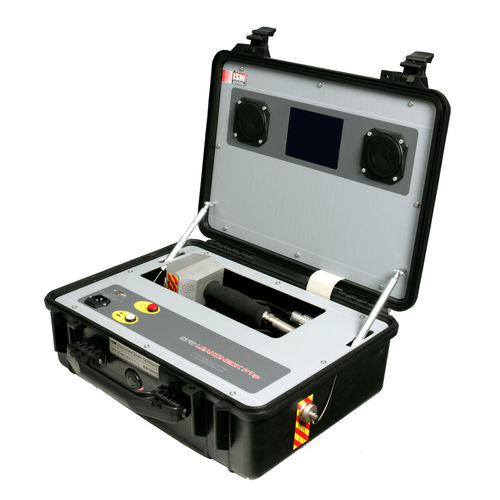Spotting What’s Invisible: The Science of SF6 Gas Cameras
The increasing need for dependable energy options has contributed to the general utilization of SF6, or sulfur hexafluoride, in power grids. This potent GHG is recognized for its excellent insulating characteristics, but it presents considerable ecological hazards when escapes occur. For this purpose, SF6 leak detection has turned into a critical part of maintaining frameworks in power generation and distribution. To successfully detect these leaks, technicians rely on advanced technology, particularly SF6 leak detection camera s.
These specialized devices are designed to detect the otherwise hidden gas, providing a clear illustration of leaks that can frequently go unnoticed by standard methods. Comprehending how these cameras work not only emphasizes their value in maintaining safety but also reinforces their role in protecting the environment. By utilizing new techniques, operators can swiftly find and address ruptures, ultimately helping to minimize the detrimental effects of SF6 on our atmosphere.
The Way SF6 Leak Detection Cameras Function
SF6 leak identification cameras use advanced infrared technology to identify sulfur hexafluoride gas leaks in various environments. Such cameras are specifically designed to identify the distinct thermal signature emitted by sulfur hexafluoride gas. When a gas leak occurs, the gas spreads and can be visualized using the camera, which records the unique absorbent properties of the infrared light spectrum associated with SF6.
The cameras operate by utilizing an infrared sensor that can measure the concentration of SF6 in the air. By analyzing the infrared radiation emitted from the environment, the camera can differentiate between sulfur hexafluoride and other gases. When a user points the camera towards a potential leak, it shows a visual representation that highlights areas with elevated concentrations of the gas. This allows users to quickly and precisely identify the specific location of the leak.
In addition to recording images, many SF6 gas leak detection cameras also provide real-time data analysis and reporting features. This functionality improves the efficiency of leak detection, allowing technicians to track changes in gas concentration over time. The combination of thermal imaging and advanced software ensures that businesses can maintain safety standards and regulatory compliance while minimizing the environmental impact of SF6 emissions.
Utilizations of SF6 Gas Detection
Sulfur Hexafluoride leak detection cameras are primarily used in the power industry to identify leaks in high-voltage circuit breakers, transformers, and various equipment that use SF6 gas. The insulating properties of sulfur hexafluoride make it a common choice for maintaining secure electrical environments; however its greenhouse gas potential means that any leaks must be identified and resolved quickly. By using an sulfur hexafluoride leak detection camera, technicians can visually pinpoint where the gas escape, ensuring that equipment operates efficiently and in compliance with environmental regulations.
In addition to this to the electricity industry, these cameras find applications in research and testing facilities. They are used to observe experimental setups that involve sulfur hexafluoride, helping scientists and engineers verify that their systems are sealed properly and operating as intended. This ability is crucial in avoiding the unintended release of SF6 during experiments and protecting both personnel and the environment.

Another important application is in the inspection and maintenance of underground utilities and distribution networks. Sulfur hexafluoride is used in gas-insulated switchgear and multiple underground substations. Leak detection cameras provide a harmless means to supervise these installations, allowing for the early identification of leaks that could compromise system integrity and safety. Regular checks using sulfur hexafluoride leak detection technology help utility companies maintain consistent service while reducing their carbon footprint.
Benefits of Using Sulfur Hexafluoride Gas Leak Cameras
One of the primary benefits of using SF6 leak detection cameras is their ability to detect leaks rapidly and accurately. Traditional methods of detecting gas leaks, such as gas sniffers or pressure testing, can be time-consuming and may not always pinpoint the precise location of a leak. SF6 leak cameras provide instant visual feedback, allowing technicians to monitor the gas emissions in real-time, leading to faster maintenance and reduced downtime in manufacturing settings.
Another important advantage is the enhanced safety provided by these cameras. SF6 is a strong greenhouse gas, and even slight leaks can have considerable environmental impacts. By using an SF6 leak detection camera, companies can minimize emissions, comply with environmental regulations, and ensure a more secure working environment for their employees. This proactive approach to leak detection helps in preserving both the environment and the health of the workforce.
Additionally, SF6 leak cameras can lead to financial savings over time. By spotting and addressing leaks swiftly, organizations can avoid the economic impacts associated with wasted gas, regulatory fines, and potential damages from environmental violations. Spending in this technology not only promotes responsible environmental practices but also contributes to the financial performance by improving operational efficiency and resource management.